
How to Use Raspberry Pi 4 Model B: Examples, Pinouts, and Specs
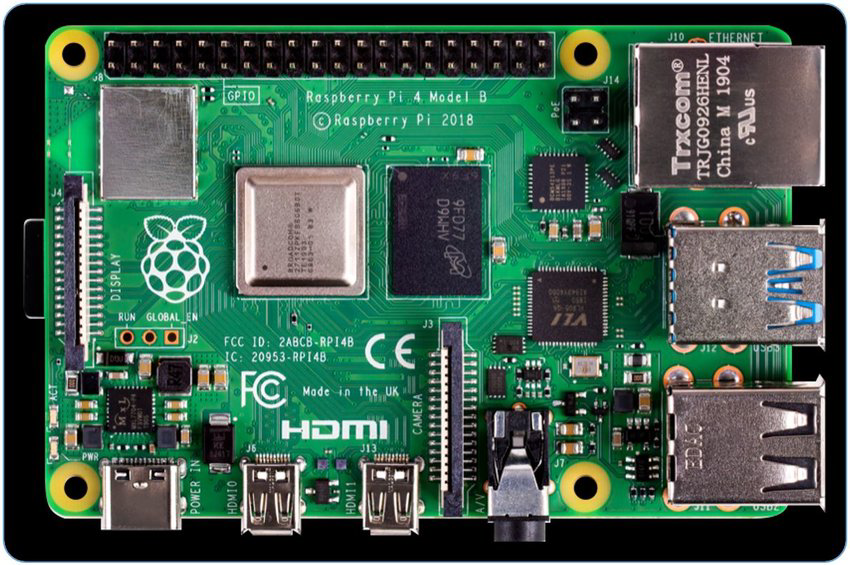
 Design with Raspberry Pi 4 Model B in Cirkit Designer
Design with Raspberry Pi 4 Model B in Cirkit DesignerIntroduction
The Raspberry Pi 4 Model B, manufactured by Raspberry Pi, is a compact and affordable single-board computer designed for a wide range of applications. Equipped with a powerful quad-core processor, multiple USB ports, dual HDMI outputs, and GPIO pins, it is ideal for projects in computing, robotics, IoT, and more. Its versatility and performance make it a popular choice for hobbyists, educators, and professionals alike.
Explore Projects Built with Raspberry Pi 4 Model B
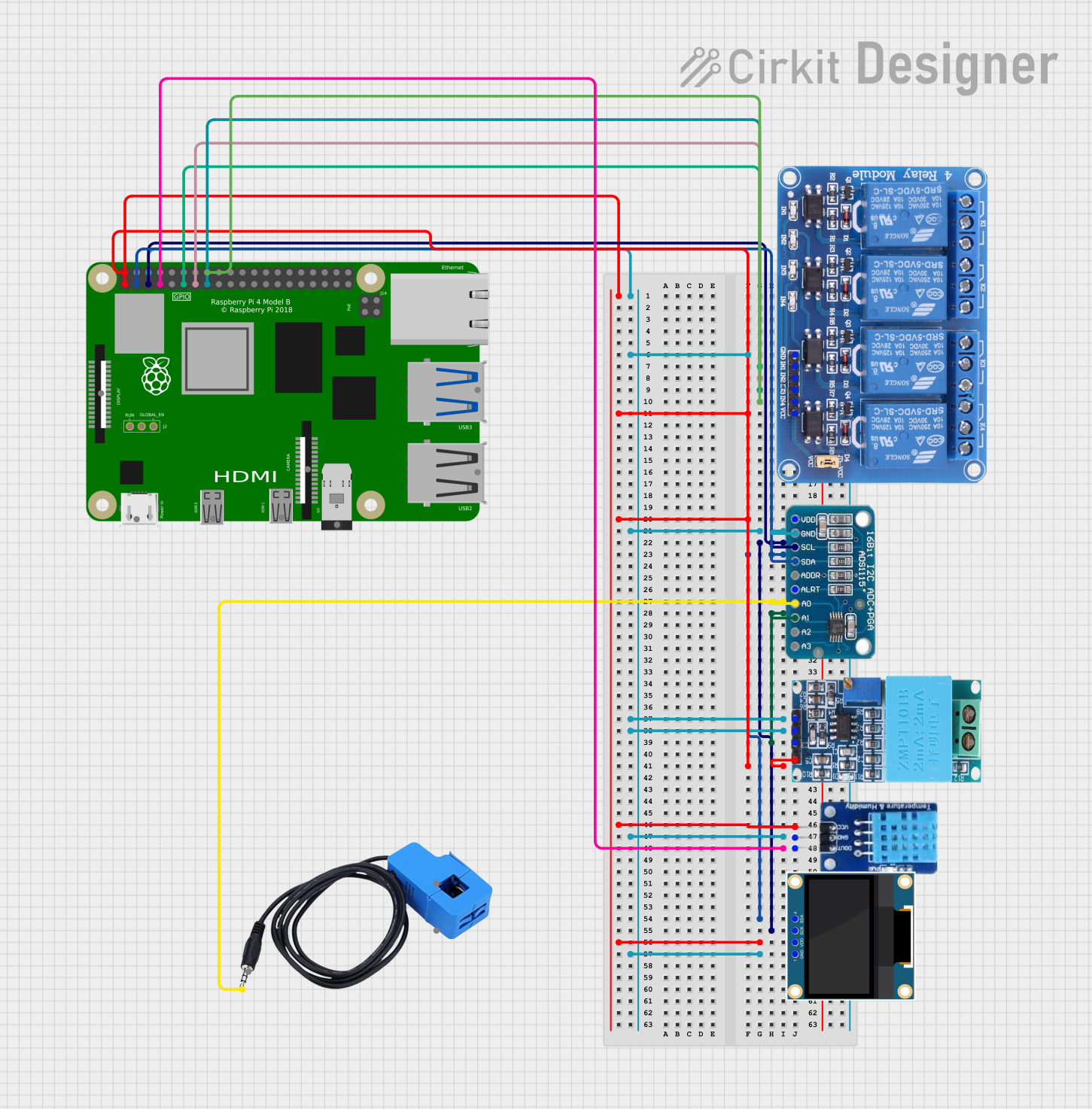
 Open Project in Cirkit Designer
Open Project in Cirkit Designer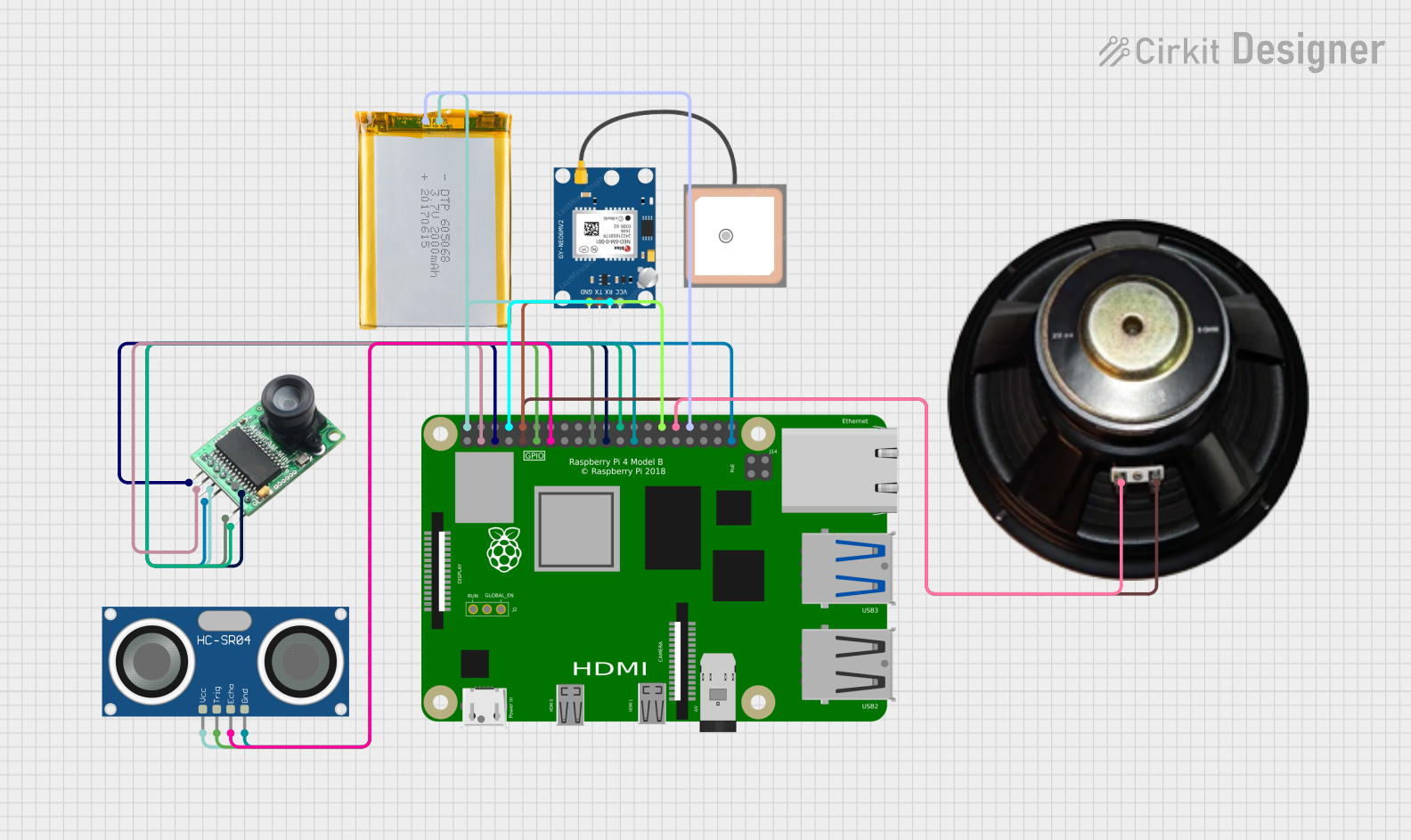
 Open Project in Cirkit Designer
Open Project in Cirkit Designer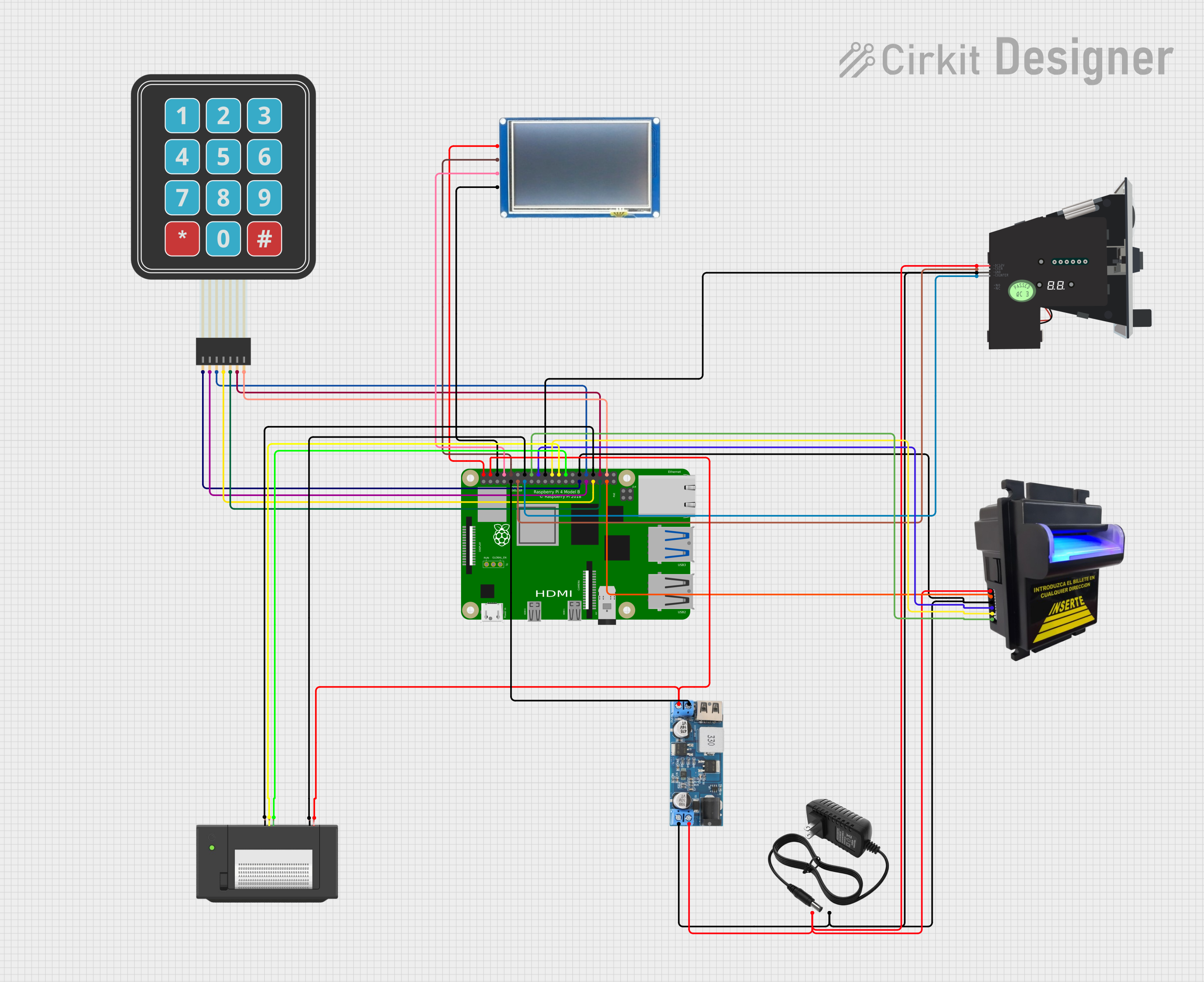
 Open Project in Cirkit Designer
Open Project in Cirkit Designer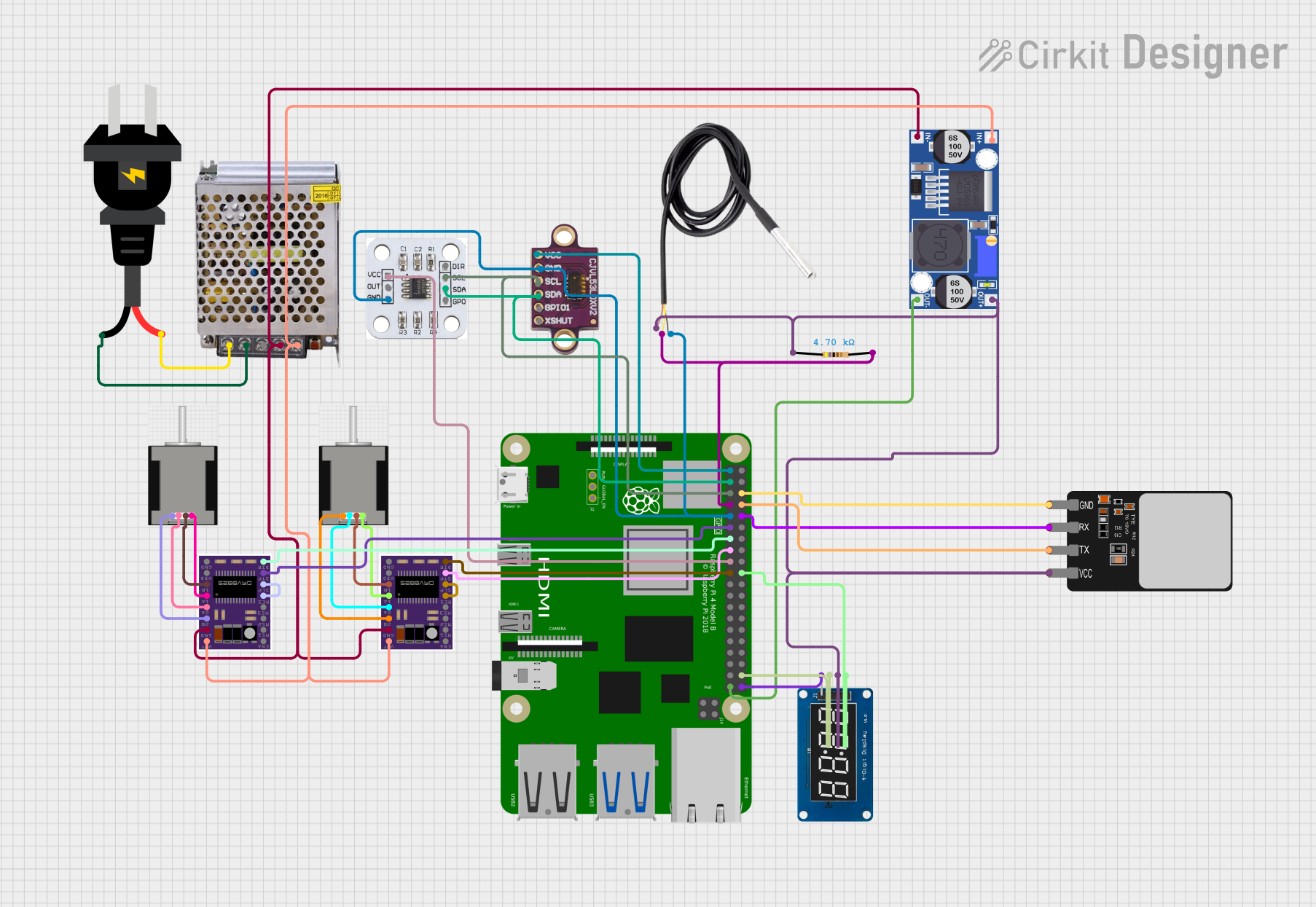
 Open Project in Cirkit Designer
Open Project in Cirkit DesignerExplore Projects Built with Raspberry Pi 4 Model B

 Open Project in Cirkit Designer
Open Project in Cirkit Designer
 Open Project in Cirkit Designer
Open Project in Cirkit Designer
 Open Project in Cirkit Designer
Open Project in Cirkit Designer
 Open Project in Cirkit Designer
Open Project in Cirkit DesignerCommon Applications and Use Cases
- IoT Projects: Smart home automation, environmental monitoring, and connected devices.
- Robotics: Controlling motors, sensors, and actuators in robotic systems.
- Media Centers: Building a home theater PC with software like Kodi.
- Programming and Education: Learning programming languages such as Python, Java, and C++.
- Edge Computing: Running lightweight AI/ML models at the edge.
- Networking: Acting as a network-attached storage (NAS) or VPN server.
Technical Specifications
The Raspberry Pi 4 Model B offers a range of features and capabilities to suit various project requirements.
Key Technical Details
| Feature | Specification |
|---|---|
| Processor | Broadcom BCM2711, quad-core Cortex-A72 (ARM v8) 64-bit SoC @ 1.5GHz |
| Memory Options | 2GB, 4GB, or 8GB LPDDR4-3200 SDRAM |
| Storage | MicroSD card slot for OS and data storage |
| USB Ports | 2 × USB 3.0, 2 × USB 2.0 |
| Video Output | 2 × micro-HDMI ports, up to 4K resolution at 60fps |
| Networking | Gigabit Ethernet, 2.4GHz/5.0GHz IEEE 802.11ac Wi-Fi, Bluetooth 5.0 |
| GPIO Pins | 40-pin GPIO header, 3.3V logic level |
| Power Supply | 5V/3A via USB-C or GPIO header |
| Dimensions | 85.6mm × 56.5mm × 17mm |
| Operating System | Raspberry Pi OS (formerly Raspbian), Linux-based OS, or other compatible systems |
Pin Configuration and Descriptions
The Raspberry Pi 4 Model B features a 40-pin GPIO header for interfacing with external components.
| Pin Number | Name | Description |
|---|---|---|
| 1 | 3.3V Power | 3.3V power supply |
| 2 | 5V Power | 5V power supply |
| 3 | GPIO2 (SDA1) | I2C Data |
| 4 | 5V Power | 5V power supply |
| 5 | GPIO3 (SCL1) | I2C Clock |
| 6 | Ground | Ground |
| 7 | GPIO4 | General-purpose I/O |
| 8 | GPIO14 (TXD0) | UART Transmit |
| 9 | Ground | Ground |
| 10 | GPIO15 (RXD0) | UART Receive |
| ... | ... | ... |
| 39 | Ground | Ground |
| 40 | GPIO21 | General-purpose I/O |
For a full GPIO pinout, refer to the official Raspberry Pi documentation.
Usage Instructions
How to Use the Raspberry Pi 4 Model B in a Circuit
- Powering the Raspberry Pi: Use a 5V/3A USB-C power supply or connect to the 5V and GND pins on the GPIO header.
- Connecting Peripherals: Attach a monitor via micro-HDMI, a keyboard and mouse via USB, and a microSD card with the operating system installed.
- Using GPIO Pins: Connect external components (e.g., LEDs, sensors) to the GPIO pins. Use a breadboard and jumper wires for prototyping.
- Networking: Connect to the internet via Ethernet or Wi-Fi for remote access and software updates.
Important Considerations and Best Practices
- Heat Management: Use a heatsink or fan for cooling, especially during intensive tasks.
- Power Supply: Ensure the power supply provides sufficient current (3A) to avoid instability.
- Static Protection: Handle the board carefully to avoid damage from electrostatic discharge (ESD).
- GPIO Voltage Levels: The GPIO pins operate at 3.3V logic. Avoid applying 5V directly to GPIO pins to prevent damage.
Example: Blinking an LED with GPIO and Python
The following example demonstrates how to blink an LED connected to GPIO pin 17 using Python.
Circuit Setup
- Connect the positive leg of the LED to GPIO17 (pin 11).
- Connect the negative leg of the LED to a 330-ohm resistor, then to a GND pin.
Code
Import the GPIO and time libraries
import RPi.GPIO as GPIO import time
Set up GPIO mode and pin
GPIO.setmode(GPIO.BCM) # Use Broadcom pin numbering GPIO.setup(17, GPIO.OUT) # Set GPIO17 as an output pin
try: while True: GPIO.output(17, GPIO.HIGH) # Turn on the LED time.sleep(1) # Wait for 1 second GPIO.output(17, GPIO.LOW) # Turn off the LED time.sleep(1) # Wait for 1 second except KeyboardInterrupt: # Clean up GPIO settings on exit GPIO.cleanup()
Troubleshooting and FAQs
Common Issues and Solutions
The Raspberry Pi does not boot:
- Ensure the microSD card is properly inserted and contains a valid OS image.
- Check the power supply for sufficient voltage and current.
No display on the monitor:
- Verify the micro-HDMI cable is securely connected.
- Ensure the monitor is set to the correct input source.
Wi-Fi connectivity issues:
- Check the Wi-Fi credentials and signal strength.
- Update the Raspberry Pi OS to the latest version.
GPIO pins not working:
- Confirm the correct pin numbering (BCM vs. physical).
- Check for short circuits or incorrect wiring.
Tips for Troubleshooting
- Use the
dmesgcommand to view system logs for hardware-related errors. - Test GPIO functionality with a multimeter or a simple circuit (e.g., an LED).
- Refer to the official Raspberry Pi forums and documentation for additional support.